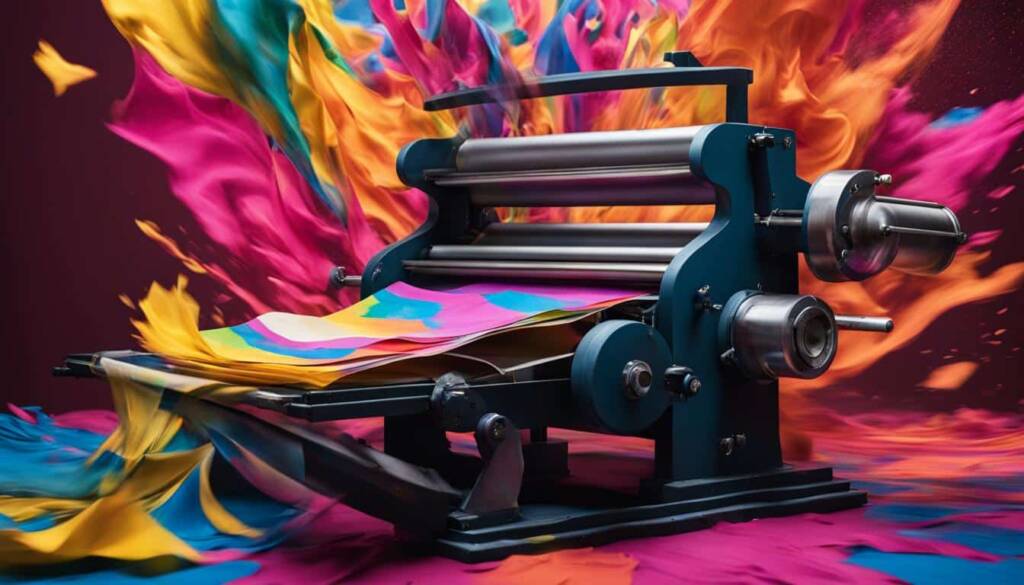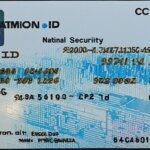Table of Contents
Offset lithography is a popular printing method used for high-quality, bulk production. It has been in existence since the 20th century and continues to be the go-to technique for businesses and organizations worldwide for a wide range of printed materials.
Whether it’s business cards, postcards, posters, brochures, or catalogs, offset lithography delivers excellent results. With its ability to produce large quantities of prints without compromising on quality, it’s an ideal choice for companies looking to create professional-looking marketing materials.
In this article, we will delve into how offset lithography works, its advantages, and the process of setting up an offset printing run.
Stay tuned for a comprehensive guide to offset lithography and discover why it’s the printing method of choice for high-quality, bulk production.
How Does Offset Lithography Work?
Offset lithography is a printing method that operates on a simple principle: ink and water don’t mix. This process is widely used in the printing industry due to its ability to produce high-quality prints for bulk production.
The first step in offset lithography is to transfer the image information, including artwork and text, onto thin metal plates. These plates act as the transfer medium for the image onto the paper.
Next, the metal plates are dampened with water and ink using rollers on the press. This is where the magic happens – ink adheres to the image area on the plates, while water sticks to the non-image area. It’s this controlled separation that allows for precise printing.
The ink and water separation is a fundamental aspect of offset lithography. It is what enables the process to produce sharp and accurate prints.
After the ink and water separation, the inked image area is transferred to a rubber cylinder or “blanket.” This blanket then comes into contact with the paper, allowing the ink to transfer smoothly onto the paper surface. This final step is known as the offset process, as the image is initially transferred to the rubber cylinder before being printed on the paper.
The use of a rubber cylinder in the offset process ensures that the printing surface remains flexible, allowing for consistent and precise printing on various types of paper.
The Offset Lithography Process:
- Image information is transferred onto thin metal plates.
- The plates are dampened with water and ink, separating the image and non-image areas.
- The inked image area is transferred to a rubber cylinder or “blanket”.
- The ink on the blanket is transferred onto the paper as it passes around the cylinder.
This process of ink transfer from metal plates to the rubber cylinder and finally onto the paper allows for high-quality and consistent prints, making offset lithography the preferred choice for various printed materials including business cards, brochures, and posters.
The image above depicts a rubber cylinder used in the offset lithography process. It showcases the crucial role of the cylinder in transferring the inked image onto the paper, resulting in the final printed product.
Advantages of Offset Lithography Printing
Offset lithography offers several advantages that make it the preferred choice for high-volume printing. One of the major advantages is cost-effectiveness, especially for large quantities. The more you print, the less you pay per piece because most of the cost is in the setup. Offset printing also produces brilliant quality prints, including accurate colors, high-quality images, and sharp typefaces. This makes it perfect for creating professional-looking marketing materials like business cards, postcards, and brochures.
Unlike other printing methods, offset lithography excels in producing high volume quantities at a low price per piece. This cost-effectiveness makes it an ideal choice for businesses and organizations looking to print marketing materials in bulk without sacrificing quality.
With offset lithography, you can easily print thousands or even millions of copies at a reasonable cost. The initial setup cost can be significant, but once the press is prepared, the production cost per piece decreases significantly. This is because the majority of the cost is in the preparation of the plates and machines, rather than the actual printing process.
Moreover, offset lithography delivers brilliant quality prints that are visually appealing and professional-looking. The colors are vibrant and accurate, ensuring that your marketing materials stand out from the competition. The images and graphics are sharp and detailed, while the typefaces are clear and readable. This level of quality adds credibility and enhances the overall impact of your marketing materials.
Whether you need to print business cards, postcards, brochures, or catalogs, offset lithography ensures that your marketing materials look professional and polished. The attention to detail and exceptional print quality provided by this printing method can make a significant difference in the perception of your brand.
To summarize, the cost-effectiveness, high volume quantities, low price per piece, brilliant quality, and professional appearance of marketing materials produced through offset lithography make it the top choice for businesses and organizations seeking efficient and visually appealing printing solutions.
| Advantages of Offset Lithography Printing | ||||
|---|---|---|---|---|
| Cost-effectiveness | High volume quantities | Low price per piece | Brilliant quality | Professional-looking marketing materials |
Setting Up an Offset Printing Run
Setting up an offset printing run requires careful attention to detail and expertise from highly-skilled operators. The process begins by clamping the imaged plates onto the plate cylinders, ensuring precise alignment. The ink settings are then adjusted to achieve the desired ink density for the print job.
Before proceeding with the full print run, a make-ready process takes place. This involves running a batch of initial sheets through the press at a low speed to check the registration (alignment) of colors and the ink/water balance. Skilled operators meticulously adjust the plate positions and ink density as needed while the press is running, ensuring optimal print quality.
Offset printing presses come in different types, including sheet-fed presses and web presses. Sheet-fed presses are commonly used for printing business marketing materials such as brochures, business cards, and flyers. On the other hand, web presses are more cost-effective for high-volume printing of items like catalogs, newspaper inserts, and magazines.
FAQ
What is offset lithography?
Offset lithography, also known as commercial offset printing, is a widely used printing method that has been in existence since the 20th century. It is the go-to technique for businesses and organizations worldwide for high-quality, bulk production printing.
How does offset lithography work?
Offset lithography operates on a simple principle: ink and water don’t mix. The image information, including artwork and text, is first put on thin metal plates. These plates are then dampened by water and ink using rollers on the press. The oil-based ink adheres to the image area, while the water sticks to the non-image area. The inked area is then transferred to a rubber cylinder or “blanket” and finally onto the paper as it passes around the blanket. This process is called offset because the image is transferred to another surface before being printed on paper.
What are the advantages of offset lithography printing?
Offset lithography offers several advantages that make it the preferred choice for high-volume printing. One of the major advantages is cost-effectiveness, especially for large quantities. The more you print, the less you pay per piece because most of the cost is in the setup. Offset printing also produces brilliant quality prints, including accurate colors, high-quality images, and sharp typefaces. This makes it perfect for creating professional-looking marketing materials like business cards, postcards, and brochures.
How is the offset printing run set up?
Setting up an offset printing run involves various steps. First, the imaged plates are clamped onto the plate cylinders, and the ink settings are adjusted for the density of ink required. The press operator runs a batch of initial sheets through the press at a low speed to check the registration (alignment) of colors and the ink/water balance. Skilled operators carefully adjust the plate positions and ink density while the press is running. There are different types of offset printing presses, including sheet-fed presses and web presses. Sheet-fed presses are generally used for business marketing printing, while web presses are more cost-effective for high-volume printing of catalogs, newspaper inserts, and magazines.













